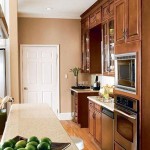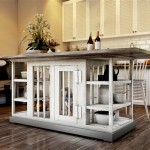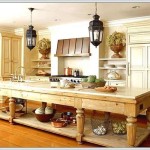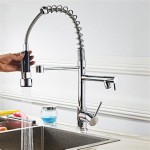Gray Stools for Kitchen Island: A Comprehensive Guide
The kitchen island has become a central hub in modern homes, serving as a workspace, dining area, and social gathering spot. Seating around the island is crucial for functionality and aesthetics, and bar stools play a significant role in defining the kitchen's style. Gray stools, in particular, offer a versatile and sophisticated option that complements a wide range of kitchen designs. This article explores the considerations, benefits, and selection criteria associated with incorporating gray stools into your kitchen island setup.
Gray, as a neutral color, provides a calming and adaptable backdrop. It doesn't clash with most color schemes, making it easier to integrate into existing kitchens without a major overhaul. From light, almost white grays to deep, charcoal tones, the spectrum of gray offers numerous shades to match the precise aesthetic desired. The versatility of gray extends to various design styles, from modern minimalist to rustic farmhouse.
The selection process for gray stools should take into account various factors, including the island's height, the desired style, the materials used, and the overall kitchen design. Proper planning ensures that the stools are not only visually appealing but also comfortable and functional for everyday use.
Island Height and Stool Dimensions
One of the most important considerations is the height of the kitchen island and the corresponding stool height required. Standard kitchen islands typically range from 36 to 42 inches in height. For a 36-inch island, counter-height stools, which are usually 24 to 26 inches high, are recommended. For a 42-inch island, bar-height stools, which are typically 29 to 32 inches high, are more appropriate. Leaving about 10 to 12 inches between the stool seat and the countertop provides adequate legroom and comfortable seating.
Measuring the island's height accurately is essential to avoid purchasing stools that are either too short or too tall. Incorrectly sized stools can lead to discomfort and an awkward seating arrangement. To ensure accuracy, measure from the floor to the underside of the countertop overhang where the stools will be placed.
Beyond height, the width and depth of the stool seat should also be considered. Wider seats offer more room and comfort, while deeper seats provide better back support. The available space around the island will influence the ideal dimensions of the stools. If the island is relatively small, compact stools may be preferable to avoid overcrowding the space.
It's also prudent to consider the base type and its footprint. Stools with wide bases, such as those with four legs or a circular base, offer greater stability but may take up more floor space. Stools with narrower bases or those designed to nest under the island when not in use can be more space-efficient, particularly in smaller kitchens.
Adjustable-height stools offer a flexible solution, particularly if the island is used by individuals of varying heights or if the kitchen design might evolve in the future. These stools typically feature a hydraulic lift mechanism that allows the user to adjust the seat height to their preference. However, adjustable stools may come with a higher price tag and might not always align with the desired aesthetic for a traditional kitchen.
Gray Stool Styles and Materials
Gray stools are available in a wide range of styles, from modern and minimalist to traditional and rustic. The style of the stools should complement the overall design of the kitchen and reflect the homeowner's personal taste. Common styles include classic bar stools, backless stools, swivel stools, and stools with armrests.
Modern kitchens often benefit from sleek, minimalist gray stools with clean lines and simple shapes. These stools typically feature metal frames and upholstered seats in lighter shades of gray. Backless stools are a popular choice for modern kitchens as they maintain a streamlined appearance and can be easily tucked under the island when not in use.
Traditional kitchens may call for more ornate gray stools with wood frames and upholstered seats in darker, more textured fabrics. Stools with decorative elements such as carved legs, nailhead trim, or button tufting can add a touch of elegance and sophistication to a traditional kitchen setting. Swivel stools are also a popular choice for traditional kitchens as they provide easy access to different areas of the island.
Rustic farmhouse kitchens often incorporate gray stools made from reclaimed wood or distressed metal. These stools typically have a rough-hewn appearance and may feature details such as exposed nailheads or visible wood grain. Backless stools or simple stools with a low backrest are often preferred for rustic kitchens as they maintain a casual, unpretentious feel.
The materials used in the construction of gray stools play a significant role in their durability, comfort, and aesthetic appeal. Common materials include wood, metal, plastic, and upholstery fabrics.
Wood stools offer a warm and natural look and are available in a variety of finishes, from light oak to dark walnut. Wood stools are typically very sturdy and durable, but they may require more maintenance than stools made from other materials. Regular cleaning and occasional refinishing can help to keep wood stools looking their best.
Metal stools are a popular choice for modern kitchens as they offer a sleek and contemporary look. Metal stools are typically very durable and easy to clean, but they may not be as comfortable as stools with upholstered seats. Metal stools can be powder-coated in a variety of gray shades to match the kitchen's color scheme.
Plastic stools are a budget-friendly option and are available in a wide range of colors and styles. Plastic stools are typically very lightweight and easy to clean, but they may not be as durable as stools made from wood or metal. Plastic stools are a good choice for kitchens that are used frequently and require easy maintenance.
Upholstery fabrics add comfort and style to gray stools. Common upholstery fabrics include leather, vinyl, and various types of fabric blends. Leather is a luxurious and durable option, but it can be more expensive than other fabrics. Vinyl is a more affordable and easy-to-clean option, but it may not be as comfortable as leather or fabric. Fabric blends offer a good balance of durability, comfort, and affordability. When choosing upholstery fabric, consider the kitchen's overall style and the level of maintenance required.
Integrating Gray Stools with Kitchen Design
The success of incorporating gray stools into a kitchen design depends on how well they complement the existing elements. This requires considering the color palette, the countertop material, the cabinet finishes, and the overall style of the kitchen.
Gray stools work particularly well in kitchens with white or light-colored cabinets. The contrast between the gray stools and the white cabinets creates a clean and modern look. To further enhance the contrast, consider using darker shades of gray for the stools if the cabinets are a very light shade of white or off-white.
In kitchens with darker cabinets, lighter shades of gray for the stools can help to brighten up the space. Conversely, if the cabinets are a deep, rich color, charcoal gray stools can create a dramatic and sophisticated effect.
The countertop material also plays a role in selecting the appropriate shade of gray for the stools. If the countertop is a light-colored marble or quartz, lighter shades of gray can complement the material's natural tones. If the countertop is a darker granite or concrete, darker shades of gray can create a cohesive and balanced look.
Adding pops of color through accessories can further enhance the visual appeal of gray stools. Consider using colorful cushions, placemats, or kitchen utensils to break up the monotony of the gray and add a touch of personality to the kitchen.
Lighting also plays a crucial role in showcasing the beauty of gray stools. Under-cabinet lighting can highlight the stools' shape and texture, while pendant lights hanging above the island can create a warm and inviting atmosphere.
Finally, consider the number of stools needed. Generally, allow for about 24 to 30 inches of space per stool to prevent overcrowding. This spacing ensures that each person has enough room to sit comfortably and move around without bumping into others.
By carefully considering these factors, it is possible to select gray stools that not only provide comfortable seating but also enhance the overall aesthetic appeal of the kitchen island and the kitchen as a whole.

Lue Bona Crystal Charcoal Gray 26 In Counter Height Fabric Upholstered Bar Stool Kitchen Island With Metal Frame Set Of 4 4d59thd23001 3 The Home

Dove Gray Island With Backless Light Leather Stools Transitional Kitchen

Kitchen Design Decor Photos Pictures Ideas Inspiration Paint Colors And Remodel Page 6

Crosley Furniture Julia Stainless Steel Top Island W X Back Stools Gray

Dark Gray Wingback Stools At Kitchen Island Transitional

Lue Bona Crystal Charcoal Gray 26incounter Height Fabric Upholstered Bar Stool Kitchen Island With Black Metal Frame 2 Pack 2d59thd23001 3 The Home

Candelabra Home Loom Platinum Barstools At Gray Island Transitional Kitchen

Counter Height Chairs Gray Lue Bona Crystal Charcoal 26 Fabric Upholstered Bar Stool Kitchen

1830mm Japandi Kitchen Lsland Grey 2 Counter Stools Set Wooden Storage Cabinet Homary

Gray Velvet Stools At Black Kitchen Island Transitional








